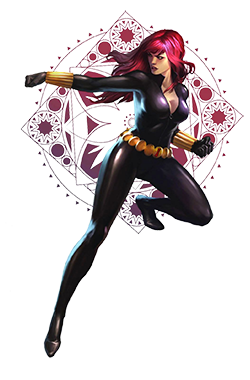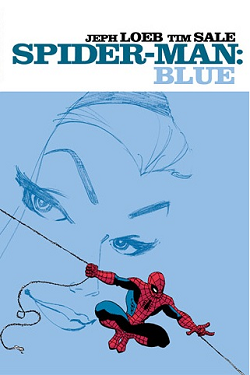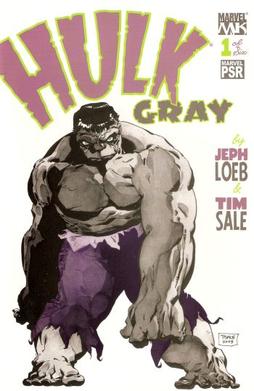
Captain America is a superhero created by Joe Simon and Jack Kirby who appears in American comic books published by Marvel Comics. The character first appeared in Captain America Comics #1, published on December 20, 1940 by Timely Comics, a corporate predecessor to Marvel. Captain America's civilian identity is Steve Rogers, a frail man enhanced to the peak of human physical perfection by an experimental "super-soldier serum" after joining the United States Army to aid the country's efforts in World War II. Equipped with an American flag-inspired costume and a virtually indestructible shield, Captain America and his sidekick Bucky Barnes clashed frequently with the villainous Red Skull and other members of the Axis powers. In the final days of the war, an accident left Captain America frozen in a state of suspended animation until he was revived in modern times. He resumes his exploits as a costumed hero and becomes leader of the superhero team the Avengers, but frequently struggles as a "man out of time" to adjust to the new era.

Black Widow is a character appearing in American comic books published by Marvel Comics. Created by editor and plotter Stan Lee, scripter Don Rico, and artist Don Heck, the character debuted in Tales of Suspense #52. The character was introduced as a Russian spy, an antagonist of the superhero Iron Man. She later defected to the United States, becoming an agent of the fictional spy agency S.H.I.E.L.D. and a member of the superhero team the Avengers.

Joseph "Jeph" Loeb III is an American film and television writer, producer and comic book writer. Loeb was a producer/writer on the TV series Smallville and Lost, writer for the films Commando and Teen Wolf, and a writer and co-executive producer on the NBC TV show Heroes from its premiere in 2006 to November 2008. From 2010 to 2019, Loeb was the Head of and Executive Vice President of Marvel Television.

Timothy Roger Sale was an American comics artist, "best known for his work on the DC Comics characters Batman and Superman and for influencing depictions of the Caped Crusader in numerous films." He is primarily known for his collaborations with writer Jeph Loeb, which included both comics work and artwork for the TV series Heroes. Sale's renditions of Batman influenced modern cinematic depictions of the character, with film directors and actors directly citing Sale's work.
Bucky is the name used by several different fictional characters appearing in American comic books published by Marvel Comics, usually as a sidekick to Captain America. The original version was created by Joe Simon and Jack Kirby and first appeared in Captain America Comics #1, which was published by Marvel's predecessor, Timely Comics. Following the apparent death of the hero James "Bucky" Barnes, the Bucky nickname and costume have been used by various heroes including: Fred Davis, Jack Monroe, Rick Jones, Lemar Hoskins, and Rikki Barnes. For a time, a child looked after by Jack Monroe was named "Bucky," but she was later adopted and given the name Julia Winters.

Captain America is a superhero appearing in books published by Marvel Comics. He appears in the Ultimate Marvel line of books, and is an alternative version of Captain America. The character first appeared in The Ultimates #1, and was created by writer Mark Millar and artist Bryan Hitch.
Young Allies is the name of three fictional superhero teams appearing in American comic books published by Marvel Comics.

General Thaddeus E. "Thunderbolt" Ross is a fictional character who appears in comic books published by Marvel Comics featuring the Hulk. Ross is a United States military officer, the father of Betty Ross, ex-father-in-law of Glenn Talbot, father-in-law of Bruce Banner, and the head of the gamma bomb project that turned Banner into the Hulk. After the creation of the Hulk, Ross pursues the creature with a growing obsession, and, after learning that Banner and the Hulk are one and the same, Ross hunts Banner as well. In 2008, Ross was transformed into the Red Hulk to better combat his nemesis.

Spider-Man: Blue is a comic book limited series written by Jeph Loeb and illustrated by Tim Sale. It ran for a total of six issues and has been reprinted in trade paperback form. Loeb and Sale had also worked on the limited series: Daredevil: Yellow, Hulk: Gray and Captain America: White which also chronicle their respective Marvel Comics characters in their formative years.

"Ultimatum" is a 2009 comic book storyline published by Marvel Comics under its Ultimate Marvel imprint. It consists of a core five-issue eponymous miniseries written by Jeph Loeb and illustrated by David Finch that was published from January to September 2009, and a number of tie-in books. The storyline deals with Magneto's attempts to destroy the world following the apparent deaths of his children, Scarlet Witch and Quicksilver in The Ultimates 3.
Red Hulk is an alias that is used by different fictional characters appearing in American comic books published by Marvel Comics. While the first two were created from members of the United States army, the third one is a form of Hulk's Joe Fixit personality.

Captain America is the name of several comic book titles featuring the character Captain America and published by Marvel Comics, beginning with the original Captain America comic book series which debuted in 1968.

Edward McGuinness is an American comic book artist and penciller, who has worked on books such as Superman, Superman/Batman, Deadpool, and Hulk. His pencil work is frequently inked by Dexter Vines, and as such, their cover work carries the stylized signature "EdEx". McGuinness frequent collaborator, writer Jeph Loeb, had characterized McGuinness' art style as incorporating elements of artists Jack Kirby and Arthur Adams.

Hulk: Gray is a December 2003-April 2004 comic book limited series written by Jeph Loeb and illustrated by Tim Sale.

The Marvel Cinematic Universe tie-in comic books are limited series or one-shot comics published by Marvel Comics that tie into the films and television series of the Marvel Cinematic Universe (MCU). The comics are written and illustrated by a variety of individuals, and each one consists of 1 to 4 issues. They are intended to tell additional stories about existing characters, or to make connections between MCU projects, without necessarily expanding the universe or introducing new concepts or characters.

James Buchanan "Bucky" Barnes is a character appearing in American comic books published by Marvel Comics. Originally introduced as a sidekick to Captain America, the character was created by Joe Simon and Jack Kirby and first appeared in Captain America Comics #1. Barnes' original costume and the Bucky nickname has been used by other heroes in the Marvel Universe over the years.

Sgt. Fury & his Howling Commandos: Shotgun Opera also known as simply Shotgun Opera or Sgt. Fury and his Howling Commandos, Vol. 2 is a 2009 comic book one-shot published by Marvel Comics. The story was written by Jesse Alexander and drawn by John Paul Leon.

James Buchanan Barnes, more commonly known as Bucky Barnes, is a fictional character portrayed by Sebastian Stan in the Marvel Cinematic Universe (MCU) media franchise. Barnes is based on the Marvel Comics character of the same name and is often referred to by his alias, The Winter Soldier, and later as the White Wolf. Barnes is childhood best friends with Steve Rogers who serves alongside him during World War II. However, Barnes gets separated from Rogers and is captured by Hydra who transforms him into a super soldier and assassin known as the Winter Soldier. Years later, after reuniting with Rogers, Barnes is eventually cured of his programming by Shuri in Wakanda. He then aids Rogers and the other Avengers in the battle against Thanos. Shortly after getting restored to life, he witnesses Rogers' retirement and tries to make his own way in life with his amends. He later partners up with Wilson, supporting him as the new Captain America.

In fandom, Stucky is the pairing of Steve Rogers and James Buchanan "Bucky" Barnes, fictional characters who appear in comic books and related media produced by Marvel Comics. The pairing is a manifestation of shipping, a phenomenon in fandom wherein individuals create fan works that depict a romantic or sexual relationship between two characters whose relationship in the source material is typically neither romantic nor sexual; Stucky is an example of slash, a genre of fan works that focus on same-sex characters. In accordance with shipping naming conventions, Stucky is a portmanteau of "Steve" and "Bucky".
















